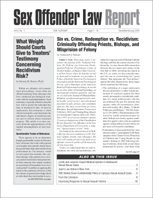Assessing and Mitigating the Risks of Self-Collected DIY Sexual Assault Kits
Author: Jon Kurland.; Holly Fuhrman.; Patti Powers.; Jennifer Long.; Jennifer Newman.
Source: Volume 23, Number 05, August/September 2022 , pp.65-72(8)

< previous article |next article > |return to table of contents
Abstract:
This article examines the brief history and emerging concerns over the use of self-collected sexual assault kits, sometimes referred to as “do it yourself” (DIY) kits, which first came into public focus in 2019 and were offered as tools of self-empowerment for victims of sexual violence, enabling victims to collect and preserve evidence of a sexual assault without receiving care from a Sexual Assault Nurse Examiner/Sexual Assault Forensic Examiner (SANE/SAFE) or other trained healthcare provider, or without reporting to law enforcement. At the start of the COVID-19 pandemic, interest once again rose in the utilization of such kits as a way to avoid overcrowded hospitals and minimize exposure to the virus. While perhaps well-intentioned, TDIY kits may pose more harm than benefit. Given the continued interest in self-collected kits, however, this article sets forth the reasons stated in favor of their appeal and then lays out the legitimate concerns they present, in depth. The article was developed with significant contributions from Dr. Julie Valentine, Associate Professor at Brigham Young University School of Nursing, and Dr. Patricia Melton, Dr. Hannah Feeney, and Dr. Kevin Strom from RTI International.Keywords: DIY “Rape Kits”; Survivor Autonomy; Access to Healthcare and Advocacy Services for Rape Survivors; Limitations as Evidence; Unverifiable Collection and Preservation
Affiliations:
1: Aequitas; 2: Aequitas; 3: Aequitas; 4: Aequitas; 5: Aequitas.